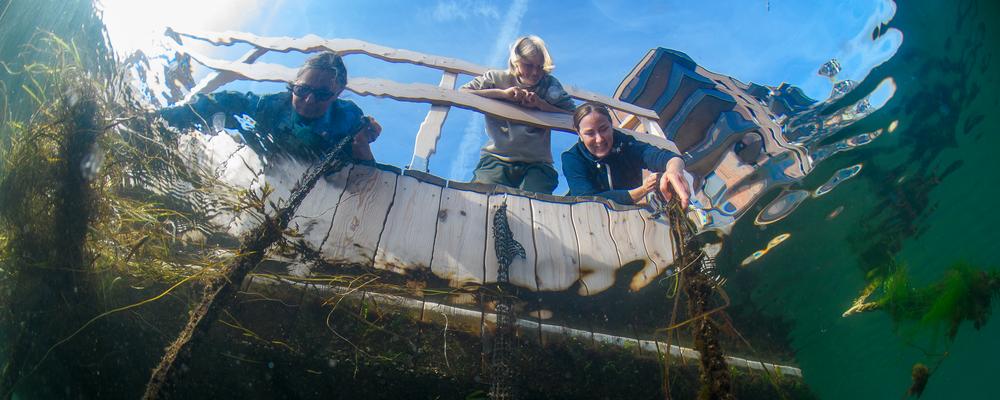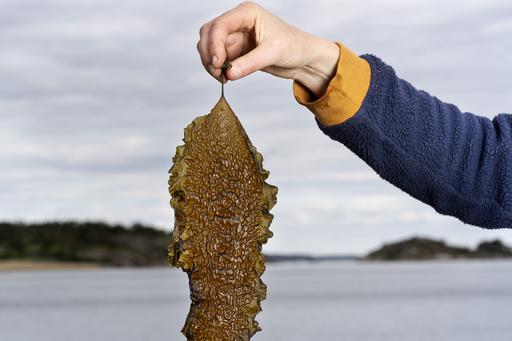Image

Photo: Ingvar Eliasson
Blue community gardens – cultivation below the surface
A blue community garden is a cultivation platform in the sea for cultivation and storage. It can be compared to an allotment on land, but instead of potatoes and carrots, algae and mussels are grown.
What is a blue community garden?
In a blue community garden seafood are grown and stored. Unlike crops on land, you do not need to add nutrients or water to the crops. There are enough nutrients in the sea in the form of nitrogen and phosphorus. The blue community gardens can be built either at sea or near the coast.

The brown algae sugar kelp is one of the species found in test cultivation. Sugar kelp can be used, for example, to make seaweed chips.
Photo: Johan Wingborg
Which species are suitable for cultivation and storage?
It's important to only grow and store the species that already exist in the local environment so that new species are not introduced to the area. This needs to be investigated at each location before a blue community garden is placed.
Species tested at the test facility
- European oyster, Ostrea edulis
- Blue mussel, Mytilus edulis
- Sugar kelp, Saccharina latissima
- Sea lettuce, Ulva spp.
- European shore crab, Carninus maenas
- Baltic shrimp, Palaemon adspersus
- Rockpool shrimp, Palaemon elegans
- Sand shrimp, Crangon crangon
- Tunicates, Ciona sp.









